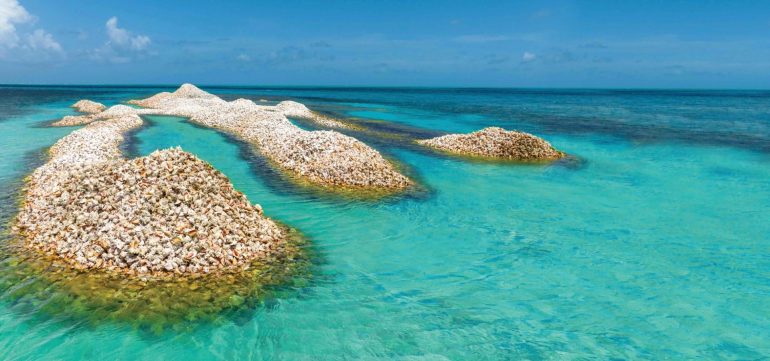Shedding Light on the Reef
The International Year of the Reef 2008 is a worldwide campaign to raise awareness of the value and importance of coral reefs and threats to their sustainability, and to motivate people to take action to protect them. To that end, over the next year, articles about coral reefs will be written as a regular feature in this magazine.
As nightfall sets on a reef, divers know the use of lights bring out the brilliant colours not usually seen during the day. Divers also know about the plankton that has the ability to light up the seascape when divers swim around without their lights. But aside from the reef being interesting to look at any time of day or night, there is a science behind everything we see and, as with so many other mysteries of the ocean, the light and colours one sees underwater is yet to be fully understood.

First of all, understanding why the reef looks more dramatic when using a light source (such as a dive light) is simple. When diving during the day, the sunlight is absorbed so the light spectrum is diminished as a diver descends. In other words, all the red colours (such as those seen on sponges and red algae) are lost within the first three metres. As the diver descends, more colours of the rainbow (first red, then orange, yellow, etc.) are lost until somewhere between deep and really deep everything looks blue and eventually black because light, at least light required for photosynthesis, is unable to reach depths beyond roughly 100 metres. However, diving with a light source at night as well as during the day allows the diver to see vibrant colours on a reef at any depth.
Here’s where it gets complicated. Illumination of the reef is something different together than just the array of colours you see when using a light source underwater. “Luminescence” generally means a low temperature emission of light; however, there are a number of kinds of luminescence. In the ocean, two kinds occur – bioluminescence and fluorescence. Divers often get these mixed up, along with phosphorescence, so without getting really complicated and into the quantum mechanics of it all, here are the differences:

Bioluminescence is a form of chemoluminescence. Chemoluminescence is a low-temperature emission of light as a result of a chemical reaction. If you watch CSI, you’ve seen it in action. When testing a clean area for signs of blood, luminol is sprayed and where there is blood, it glows. Bioluminescence is the same as chemoluminescence except that it occurs in a living organism such as firefly and the glowing sparkles you see in the water at night. This bioluminescence in the ocean is exhibited by hundreds of different types of invertebrates including plankton as well as a number of fish such as the anglerfish that uses the “light” to catch its prey.
Fluorescence and phosphorescence are forms of photoluminescence. In the simplest of terms, photoluminescence is the emission of light from something that has absorbed another form of light. In the case of fluorescence, if you shine the right colour of light on certain targets, a different colour of light will glow, just like the way a white shirt glows in a nightclub full of black lights.

In the ocean, a number of species of corals and reef creatures are fluorescent if you use the right kind of light. However, during a bleaching event, some species exhibit fluorescence without needing to use a special light. Why some coral fluoresce and others don’t is unknown.
In the case of phosphorescence, a target is “charged” and will continue to glow after the light is turned off. In this case, many dive gauges are phosphorescent so you can see them in the dark.
So the next time you are out diving or snorkelling, look closely–you may see the reef in a whole new light.





